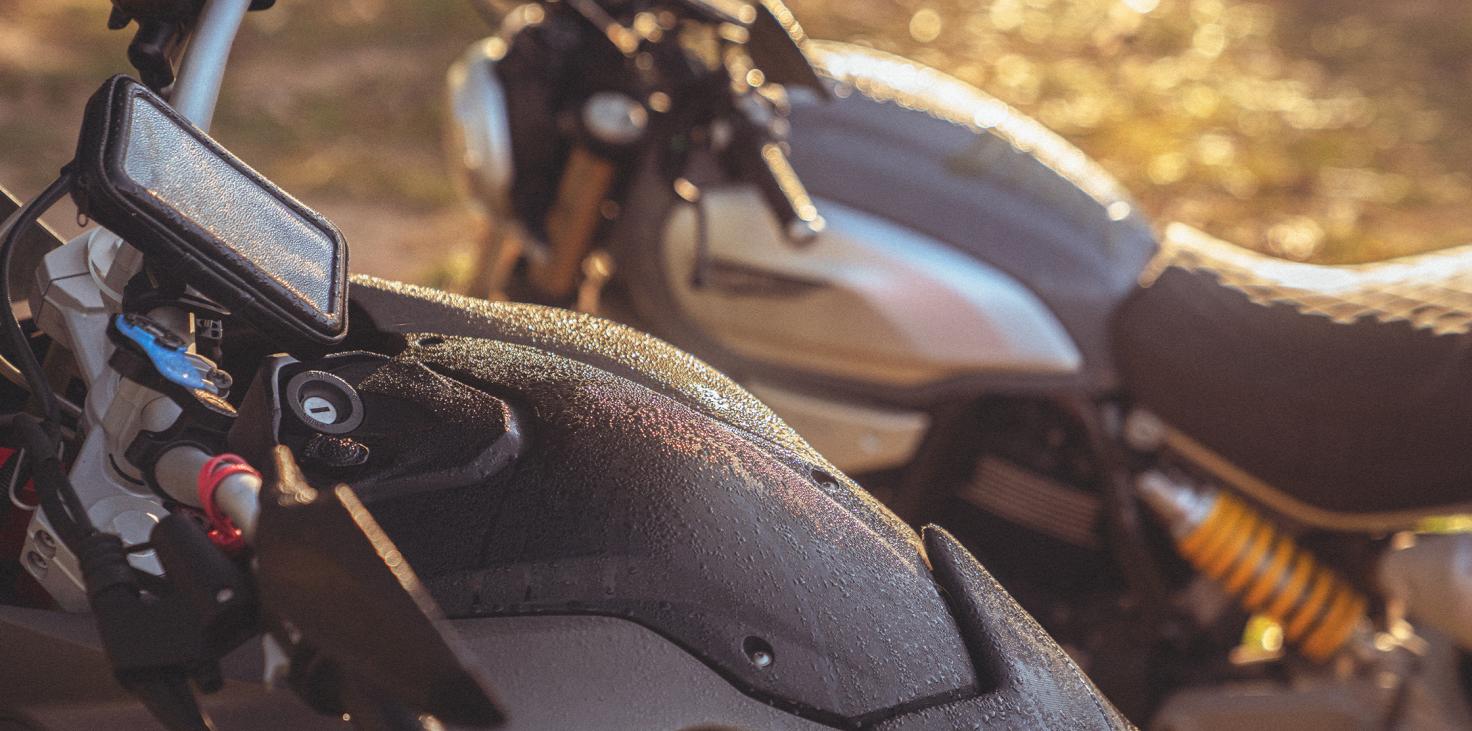10 June 2022
A guide to help you safely ride through wintertime
Here’s what you need to know to help keep you safe on the road.

Whether you’re a beginner rider or have decades of experience behind the handlebars, when the weather drops and sunshine transitions to clouds, it can be tricky to navigate the roads on a motorcycle or scooter.
If you’ve had your motorbike or scooter properly serviced and are ready for a winter riding adventure, here is our guide to help you safely navigate the roads during the coldest season of the year.
1. Get NRMA Motorcycle or Scooter Insurance
First things first. Before you even pull on your helmet and take a seat on your bike, you should have adequate cover for your motorcycle or scooter. With NRMA Motorcycle and Scooter Insurance you can find the cover that’s right for you. For full protection, Comprehensive Motorcycle Insurance and Comprehensive Scooter Insurance provides cover for your motorbike or scooter against accidental damage, collision or crash, earthquake, explosion, fire, flood, storm, theft or attempted theft, tsunami, vandalism or a malicious act.
2. Wear the correct gear
It might seem simple enough and you may have even heard this tip throughout your motorcycling or scootering life but wearing the appropriate equipment means you’re being a responsible rider and you’re putting your safety first. Not only does proper gear help protect you in the event of an accident, but it can also help keep you warm and toasty – especially if you layer up. Heavy duty gear such as a full-face helmet, boots, pants, gloves, a hoodie and a jacket will help protect you from most harsh winter elements.
3. Check your tread
Cold weather, icy roads and snow are already a risk to consider when riding in the cooler months, but always keep in mind, cold weather equals cold tyres and therefore less traction. So, check your tyres are correctly inflated, make sure they have adequate tread for winter riding and take your machine to a motorcyclist specialist for a routine service before hitting the road.
4. Watch out for black ice
What is black ice, you ask? Black ice is a thin coat of highly transparent ice and can be very dangerous – for both riders and drivers – so it’s important to know what it is and how you should react if you have an encounter. It forms when the temperature of the air is above freezing and when the surface temperature of the road is below freezing. This clear layer of ice is called ‘black ice’ because it usually forms over parts of the road, making it nearly impossible to see. It’s said if you get caught in areas of black ice, you should keep calm and keep your steering straight, stop accelerating and avoid breaking at all costs. Although it might be force of habit to break when you find yourself in these kinds of situations, breaking will make it worse and cause you to slide even more.
5. Take it slow and keep your distance
Just like when you slow down when driving a car in wet weather, it’s best to slow down and keep a good distance between other vehicles on the road when riding in winter. Cold roads, rain and ice significantly increases the time it takes you to stop and brake, so be sure to slow down and increase the distance between you and the vehicle in front of you.
6. Know your limits
If you’re only a few kilometres away from your destination and it starts raining or snowing, it might be tempting to push through it, but do not keep going because doing so puts you at risk. Harsh conditions can impair your vision of the road ahead and make it harder for you to safely navigate. Instead, seek shelter and wait it out.
To find out more about NRMA Motorcycle and Scooter Insurance, call us on 132 132 to get a quote or find us online 24/7 at nrma.com.au.



